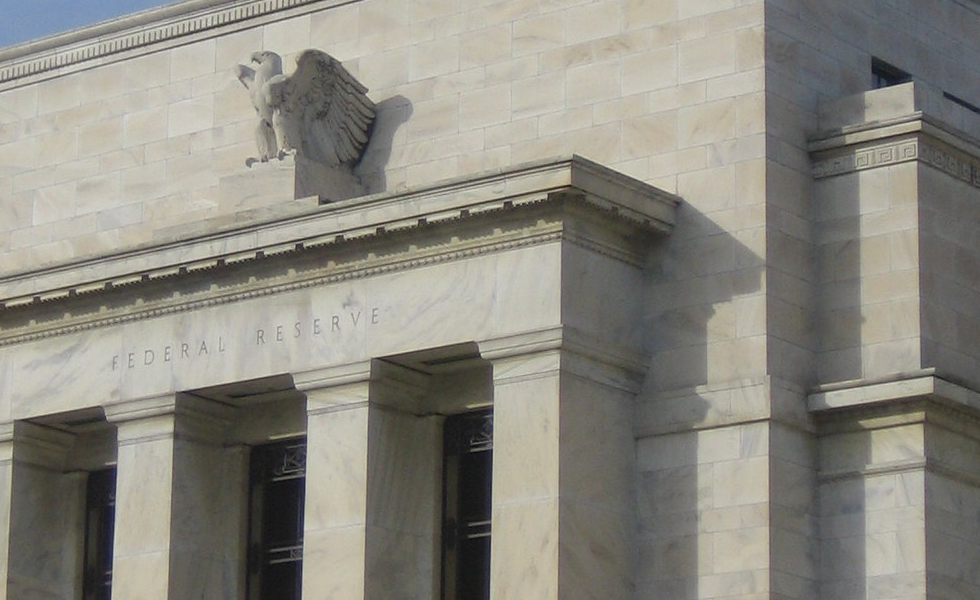Monex Europe: Fed signals US rates will be much higher for far longer

The Federal Reserve held interest rates steady today at the current target range of 5.25-5.5%, in line with their inter-meeting commentary, the widespread consensus amongst economists, and market pricing.
Given the expected lack of movement in the Fed’s policy rate, the main focus was instead on its forward guidance. Predominantly, this centered on whether FOMC participants would maintain their near-term hiking bias within the latest dot plot projection given the improvement in the macro data since July and whether the longer-run projection for interest rates would be increased given the resilience of the US economy to the hiking cycle to date.
While most sell-side analysts had speculated that the improved macro data since June’s projections would result in a flattening in the median dot plot trajectory, via a downgrade in the 2023 median dot and an upgrade to the longer-run estimate, we were more hesitant, mainly due to the signal this would send to markets. Even though Chair Powell has downplayed the importance of the dot plot this hiking cycle, it still remains a highly relevant guidance tool for markets, and Fed members are aware of this.
As such, we didn’t expect any change in the 2023 median dot, mainly as this would erode the message that further rate hikes are still viewed as likely in Q4 after it has served them so well over the summer period. On the longer-run rate of interest, known to many as the r* but separated as a different variable by Chair Powell in the press conference, we didn’t expect any change from the previous projection of 2.5%. This would be consistent with Powell’s Jackson Hole speech, where he downplayed the accuracy of predicting such values.
The updated SEP was as hawkish as credibly possible
Despite a credible risk that the median dot for 2023 could have been downgraded given it would have taken only 3 FOMC members to view no further rate hikes as necessary this year, it was held steady at 5.625%, with only seven members remaining in favour of holding rates at current levels.
Instead, the projections for 2024 and 2025 delivered most of the surprises. The Fed used these projections to relay its 'much higher for far longer' message, signalling fewer cumulative rate cuts by end-2025. Both the 2024 and 2025 dots were raised by 50bps—the former from 4.625% to 5.125% and the latter from 3.375% to 3.875%—implying 50bps of cuts next year and another 125bps the year after.
Finally, despite widespread speculation that the neutral rate of interest could have drifted higher since Covid, officials maintained their long run rate projection of 2.5%.
While markets generally focus on the median dots, the means also bolstered the more hawkish outlook on rates as they also reflect the skew in the distribution of forecasts. As with the median, the mean was unchanged at 5.5% in 2023, but in 2024, the mean rose from 4.75% to 5.04%.
Even after rising from the previous set of projections, the new mean dot for 2024 sits just below the median of 5.125%, suggesting that the risks around the projection are now roughly balanced instead of being tilted to the upside as in June. Further out on the projection horizon, the mean remains higher than the median, however, with the 2025 mean sitting at 3.97% and the longer-run mean at 2.75%, a full 25bps above the median.
Notably, the revised rate guidance was accompanied by stronger growth forecasts in both 2023 (+1.1pp to 2.1%) and 2024 (+0.4pp to 1.5%), as well as lower projections for the unemployment rate for 2023 (-0.3pp to 3.8%), 2024 (-0.4pp to 4.1%) and 2025 (-0.4pp to 4.1%).
Interestingly though, despite the better growth conditions, the median inflation estimates remained largely unchanged, with just a 0.1pp increase in both the 2023 and 2025 headline projections and only a 0.1pp increase in the 2025 core PCE forecast to 2.3% despite a meaningful near-term downgrade to the 2023 rate from 3.9% to 3.7%.
Mechanically, greater aggregate supply must be delivered for growth to rise while keeping inflation intact, so we will keep an eye out for whether officials’ public views on supply have changed given that in July, policymakers still viewed below-trend growth as necessary for tackling inflation.
One final development in the latest Summary of Economic Projections round was the inclusion of a 2026 projection, where the economy is now expected to normalise with real GDP growth at 1.8%, in line with the Fed’s estimate of potential output, the unemployment rate at 4%, and headline PCE back at the 2% target.
Markets get indigestion from the SEPs, but ultimately the dollar tracks higher
Upon the release of the Fed’s rate statement and the updated SEP, markets had generally bought into the more hawkish narrative. The dollar firmed across the board, the US yield curve bear flattened, and equities dipped to fresh session lows even as the Fed’s projections stressed greater confidence in the soft landing narrative.
However, heading into Chair Powell’s press conference and throughout the first few questions, markets had nearly reversed all of the kneejerk reaction. This was a perplexing development given the hawkish tone of the decision, and the fact that Chair Powell didn’t deviate from the core messaging. After this brief period of indigestion, however, the broad dollar resumed its rally to break its initial knee-jerk high.
Aside from the dollar making a fresh daily high, US cash equities and global equity futures sank lower. With the Fed continuing to talk tough when it comes to holding rates higher for longer, and this narrative proving more credible in the US relative to other DM economies where recession risks are more salient, we think it remains too early to turn bearish on the dollar. However, it is now up to the messages of other DM central banks whether the Fed’s continued pushback on 2024 rate cuts results in another leg higher in the dollar. After all, it is all relative in FX markets.








